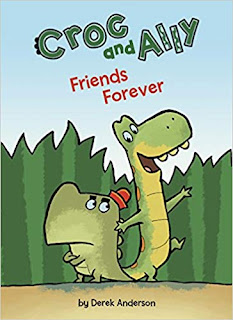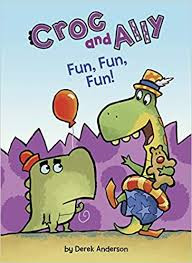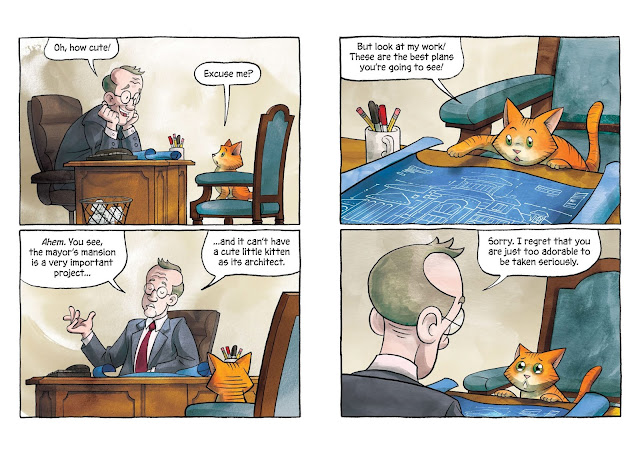 |
Book cover of Snow Day!
by Candice Ransom, illus. by Erika Meza
|
Book covers of Garden Day!, Pumpkin Day!, and Apple Picking Day!
The rhyming text, possibly helpful for predicting the last word of a phrase, is printed in a large font that pops off the page. There’s only a handful of words on each page and most are single syllable. The illustrations are bright and colorful, with seasonal appeal for both grown ups and children. Some pages have strong visual context clues, so important for new readers as they encounter new vocabulary.
 |
| Image of kids having a snowball fight from Snow Day! by Candice Ransom, illus. by Erika Meza |
This title is labeled a Step 1: Ready to Read (“preschool-kindergarten”), however the complex punctuation (plentiful commas, and even a dash) suggest that it might be a better fit for more confident readers. Consider the following pages, which feature these four lines of text:
“Bunny hat- / on you, too cute! / Can not zip my coat./ Lost my boot.”
 |
| Image of brother and sister getting dressed in winter clothes from Snow Day! by Candice Ransom, illus. by Erika Meza |
Would these type of sentence fragments be confusing to new readers? I also have some reservations about the use of "can not" instead of "cannot", which seems an odd choice. Additionally, although the text rhymes, the lack of plot and repetition of words and ideas could make it challenging for readers to rely on the rhyme scheme as a support.
There’s strong use of visual clues throughout, but instead of repeating new words to give readers a chance to practice and gain confidence, often times new words are only used once and then never again. I wonder if the introduction of so many new words could be overwhelming to some readers.
 |
| Image of kids snuggling up and drinking cocoa on a couch from Snow Day! by Candice Ransom, illus. by Erika Meza |




















